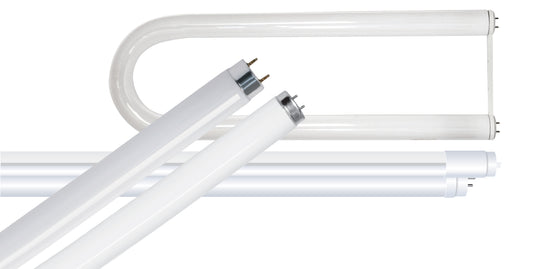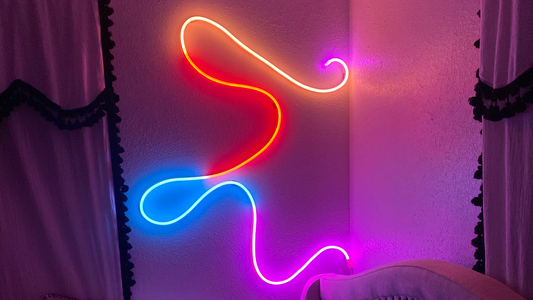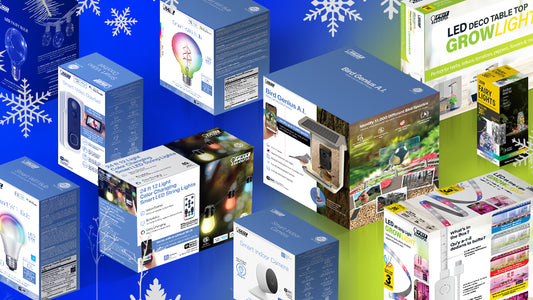Choosing the right bulb for your floor or table lamp can seem overwhelming, but it doesn't have to be complicated. Typically, a basic closed-A shape bulb works well, but some lamps might need something more specific.
When picking a bulb, think about how bright you need it to be (wattage), the type of light you want (color temperature), and what kind of bulb is most efficient for you (LED, CFL, etc.).
For a cozy feel, go for a warmer color temperature (around 2700K to 3000K), while cooler temperatures (around 4000K) are better for tasks like reading or working. LED bulbs are great for saving energy and lasting a long time.
Consider any special features your lamp might have, like dimming capabilities, and make sure the bulb fits properly. By thinking about these things, you can find the perfect bulb to make your lamp shine just right.
Floor or Table Lamp
When it comes to selecting bulbs for floor or table lamps, the standard choice is often a basic A shape bulb. This type of bulb tends to work well for most lamps, providing adequate illumination for various purposes. However, it's important to acknowledge that certain floor and table lamps may have specific requirements that go beyond the standard bulb recommendation.

Pendant Fixtures
When it comes to pendant fixtures, it's important to consider that these fixtures typically expose part of the bulb, making bulb selection crucial for both aesthetic appeal and lighting quality. Given this visibility, opting for bulbs that not only provide appropriate illumination but also complement the overall design of the pendant fixture is key.
Two popular bulb shapes commonly chosen for pendant fixtures are globe and traditional bulb shapes. These shapes are favored for their versatile aesthetics and ability to enhance the visual appeal of the fixture while emitting light effectively. The globe shape offers a modern and sleek look, often dispersing light evenly in all directions, making it suitable for pendant fixtures where a soft, diffused glow is desired. On the other hand, traditional bulb shapes exude a timeless charm and can add a touch of classic elegance to pendant fixtures, particularly in spaces with a more traditional or vintage-inspired decor.

Wall Sconce
When it comes to wall sconces, they typically exhibit a smaller and more decorative design compared to other lighting fixtures. These fixtures are often chosen not only for their functional lighting but also for their ability to add a touch of style and sophistication to a space. Due to their compact size and decorative nature, wall sconces are commonly used to enhance the ambiance and visual appeal of various rooms in a home or commercial setting.
One key aspect to consider when selecting bulbs for wall sconces is the shape of the bulb itself. Given the typically slender and streamlined design of wall sconces, bulbs with narrow shapes are often preferred to ensure a seamless and visually pleasing fit within the fixture. Two popular bulb shapes that pair well with wall sconces are tube and flame shapes. These slender and elongated bulb designs complement the sleek profile of the sconce, contributing to a cohesive and harmonious aesthetic.

Ceiling Fixtures
When it comes to ceiling fixtures, they typically feature enclosed designs, meaning that the appearance of the bulb is not a significant factor in their overall aesthetic. Instead, the focus is primarily on selecting bulbs that offer longevity and reliability to minimize the need for frequent replacements. Given the enclosed nature of these fixtures, the priority is to choose bulbs with the longest lifespan possible that can comfortably fit within the fixture.
One of the primary considerations when selecting bulbs for ceiling fixtures is lifespan. Since accessing and replacing bulbs in ceiling fixtures can be challenging and time-consuming, it's essential to choose bulbs that have a long lifespan to minimize maintenance requirements. Bulbs with longer lifespans not only reduce the frequency of replacements but also contribute to cost savings and convenience over time.
Additionally, when choosing bulbs for ceiling fixtures, it's important to ensure compatibility with the size and specifications of the fixture. Bulbs that are too large may not fit properly within the fixture, leading to potential issues with installation or performance. Conversely, bulbs that are too small may not provide adequate illumination or may appear disproportionate within the fixture.

Chandelier or Decorative Fixtures
When it comes to chandeliers or other decorative fixtures, selecting the right bulb shape can significantly enhance their visual appeal and overall aesthetic. While functionality remains important, the focus shifts towards choosing bulbs that not only provide adequate illumination but also complement the decorative elements of the fixture.
Opting for bulb shapes that are visually appealing and elegant, such as torpedo tip or flaming tip bulbs, can enhance the beauty of chandeliers and decorative fixtures. These bulb shapes add a touch of sophistication and style to the lighting ensemble, serving as both functional sources of light and decorative accents within the space. Their unique shapes and designs can complement the intricate details and ornate features of chandeliers, elevating their overall appearance.
In addition to aesthetic considerations, it's also essential to ensure that the selected bulbs meet the functional requirements of the fixture. Factors such as brightness, color temperature, and bulb type should be taken into account to ensure optimal lighting performance. Bulbs with appropriate brightness levels and color temperatures can create the desired ambiance and atmosphere, enhancing the overall mood of the space.

A Light Bulb's Base is Also Important
The base of a light bulb is available in various styles and shapes, each serving a specific purpose. It holds particular significance as it determines the compatibility of the bulb with a fixture. When replacing a bulb in an existing fixture, it is crucial to ensure that the new bulb's base matches that of the previous one to guarantee proper fit and functionality.





